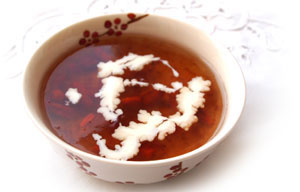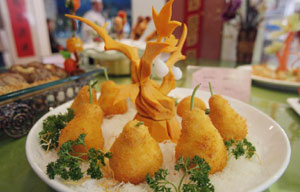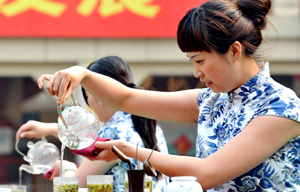
 |
|
oyako kamameshi.[Photo/China Daily] |
The big appetizer comes as an assortment of six kinds of cold dishes, beautifully arranged like a miniature Japanese garden with well-proportioned greens - in wooden boxes, glass cups, clay pots, with dry ice puffing like a hot spring. Among the six are roast duck and fried scallions with balsamic sauce, chopped octopus with wasabi paste, and my personal favorite: the Shari Tofu, or Japanese tofu mixed with Mascarpone cheese. The creative fusion successfully combines the creamy taste of the cheese and the delicate texture of tofu.
The specially selected sashimi, consisting of salmon and tuna, is average - fresh but nothing impressive. But the seaweed soy sauce that goes with the fish brightens the whole dish up. Different from the traditional spicy wasabi, the earthy sauce, according to the chef, somehow completes the taste of the fish as it comes from "the same marine biology".
For main courses, the miso-glazed cod with seasonal vegetable is a traditional choice, while kakuni, the Japanese traditional braised pork is less expected. Although the pork is a household dish in Japan, it is not commonly seen in Japanese restaurants in Shanghai. It resembles the Chinese Dongpo pork both in taste and portion.
The dessert, green-tea pudding, is an all-time favorite at the restaurant, which can also be ordered during afternoon tea. It proudly preserves the essence of Japanese cuisine: delicate and light, like having a cup of tea at the end of a meal, but with the sweet goodness of dessert! For extra richness, the restaurant serves it with a small cup of brown-sugar syrup.


2013 Chinese New Year |

Hidden dragons, crouching tigers |

Soap beans, silver ears and peach gum |

Special:Winter Solstice |

'Potato festival' kicks off in Shandong |

Mario themed restaurant opens in Tianjin |

HK carries out avian influenza tests on imported chicken |

2013 China Tea Conference kicks off in Zhejiang |